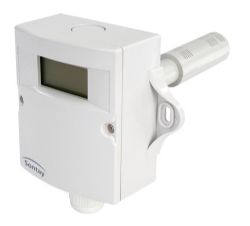A plentiful supply of fresh air is essential in a school environment in order to aid learning. Trevor S. Palmer examines the important role that building control systems play in ensuring high air quality
It has been almost a year since the James Review, headed by Sebastian James of the Dixons group, announced its recommendations on the Building Schools for the Future Programme (BSF). Set up after backlash to the coalition Government scrapping the programme, the review's aim was to look at how school building should be carried out in the future and find 'value for money' for the Government against the backdrop of the current spending constraints.
Points raised in the review included the issue of increasing energy costs. The Regulator expects energy costs to rise by 6 per cent over the next decade to revamp the UK's energy grid.
The review predicted that this increase could raise energy bills in UK schools by as much as £100 million in the next year or two.
A key message from the report was that school-by-school monitoring, clear guidelines and the roll out of better energy management systems could reduce these costs.
Since the announcement, the Government has revealed plans to set up the Education Funding Agency (EFA) to manage capital spending as outlined in Sebastian James' proposals. Planned for launch in April this year, the EFA will control the allocation and management of revenue and capital funding, including the delivery of schools. This will give schools more control over their funding.
Integral part of BSF
Guidance on CO2 levels was an integral part of the original BSF scheme, enshrined in the regulatory framework of Building Bulletin 101. This specified limiting CO2 levels within teaching and learning spaces to 1,500 ppm in recognition of the proven link that exists between indoor air quality and its impact on the academic performance of children.
This places a large emphasis on ventilation, but without an appropriate building control system there is no way of measuring the levels of CO2.

The problem with many existing school buildings is that fresh air supply rates per person are often so low, well below what should be the recommended level of between 10-12 l/s, that CO2 concentrations are well above this figure. This not only impacts upon the learning abilities of pupils, but it also leads to adverse health effects. As a result, the new school building scheme needs to keep air quality as one of the most significant building services considerations.
It is possible to achieve these energy saving objectives, in line with the thinking of the James proposals, and still deliver the air quality needed to create the best possible learning environment and this is where building controls can play an important role.
The key is accurate air quality measurement, and here innovation in sensor technology is helping to make life more comfortable for specifiers as well as for school occupants.
Measuring CO2 levels is an essential requirement to ensure energy efficient ventilation. But indoor comfort and air quality will also be adversely affected by other pollutants from outside or inside the building, in addition to uncomfortably high temperature and RH levels.
There is no longer a need to install a whole range of different sensors, for example, one for temperature and one for humidity, and so on. Now, multifunctional sensors will do the whole job in one. These modern devices can measure different variables which may include air quality and CO2 for occupancy alongside traditional temperature and humidity measurements.
This combined approach offers several advantages. The school can monitor and report on total environmental conditions and yet service only a single device into the future. It can also minimise the 'wall acne' that can occur if many devices are required. The systems integrator, meanwhile, can provide more sophisticated control strategies at a lower total installed cost with fewer devices to install and service.
When it comes to building a new school, room sensors are often overlooked. Accounting for just two per cent of the budget for a whole project, room sensors themselves are not always the main focus when it comes to selecting and specifying the building control system. However, different price-points often reflect a differential in quality.
Choosing the lowest cost sensor brings the increased risk of compromising long-term measurement reliability and performance stability. Device failure can lead to the time and cost of unnecessary call-outs and product replacement issues.
The importance of fresh air quality in the classroom cannot be understated and this will remain a key consideration when building a school. Control peripheral technologies exist which will enable us to make a difference now and in the future.
With equipment correctly selected and specified, we can meet the new challenges and help deliver low carbon schools for the future.
// The author is managing director of Sontay //